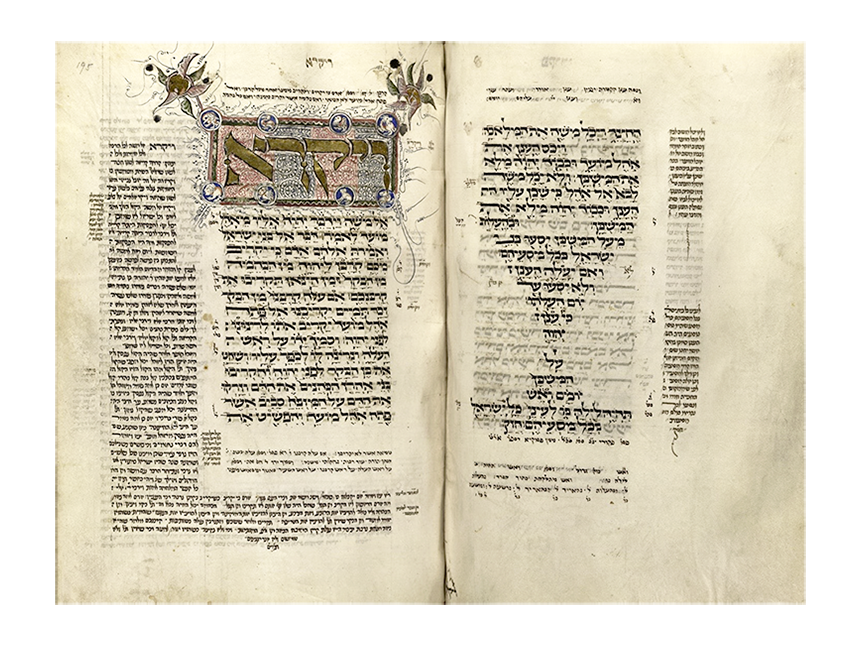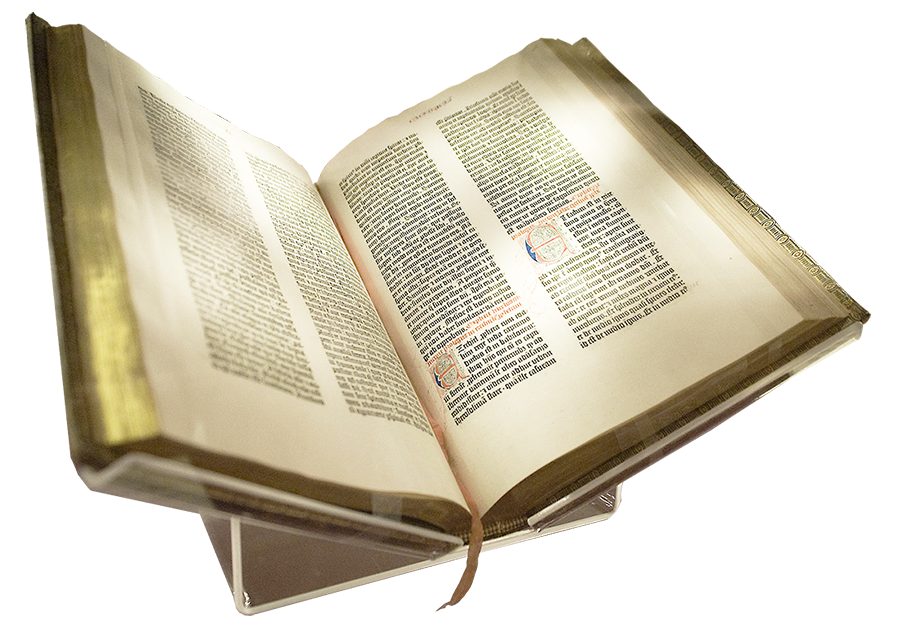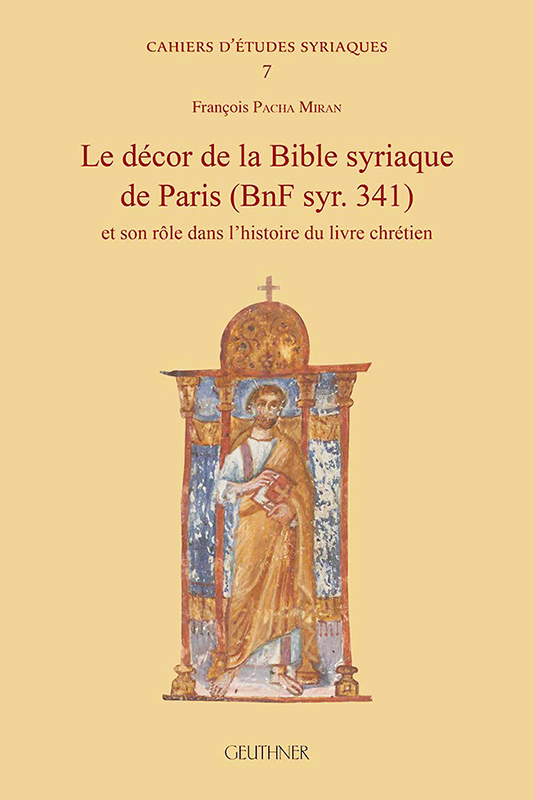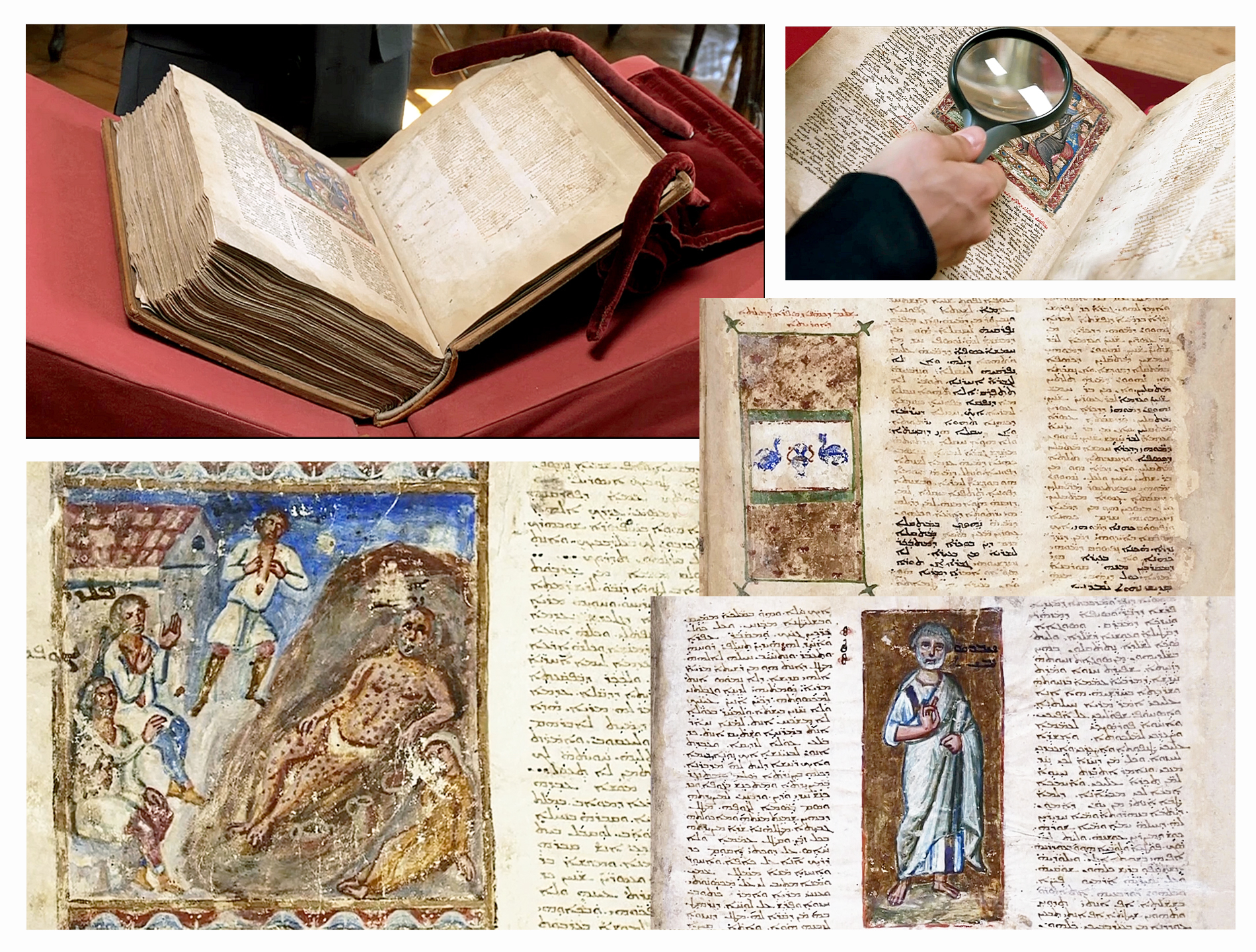
Bible, History, Archaeology
Bible,
History,
Archaeology
The different versions
from the Bible
 Historical versions
Historical versions
We do not possess any of the original manuscripts of the 66 books of the Bible (73 for the Catholic editions and two more for the Orthodox, (see the Books of the Bible page), but only copies of copies.
Image opposite: a bust of Ptolemy II Philadelphus (c. 309/308 - 246 BC) on display at the National Archaeological Museum in Naples. Marie-Lan Nguyen.
For the Old Testament (or First Covenant), however, in addition to manuscripts copied from generation to generation with extreme meticulousness by the massoretes (faithful transmitters of the textual form of the Hebrew Bible), Targoums, translations into Aramaic after the Exile. Hebrew had become an incomprehensible language for the Jews returning from the Babylonian exile (6th century BC).
In the 3rd/4th century BC, the Old Testament was translated into Greek. Septuagint version, which was generally used by early Christians. According to a tradition (legend?) reported in the Letter from Aristée (2nd century BC), the translation of the Torah (the first 5 books of the Bible) is said to have been carried out by 72 (seventy-two) translators in Alexandria, around 270 BC, at the request of King Ptolemy II Philadelphus for his Library of Alexandria.
Image below : Hand-copied New Testament by John Wycliffe, circa 1400 © Van Kampen Collection. On view at the Holy Land Experience in Orlando (Florida). Photo Paolo Verzone.

In the following centuries Vulgate and not the originals, which served as the basis for translations into various languages (French, Provençal, etc.). Some 60 translations are held by the Bibliothèque Nationale de Paris.
Visit Vulgate became the official version throughout the Middle Ages. It remained authoritative in the Catholic Church until the 20th century.
A copy of the beginning of Aristaeus' Letter to Philocrates. © Vatican Apostolic Library, 11th century.
Aristaeus's letter to Philocrates is a pseudepigraph dating from before 100 B.C., and is a legendary account of the translation of the Pentateuch into Greek. It is undoubtedly the first document to record the origins of the Greek Septuagint Bible, and is an excellent reflection of the state of mind of Alexandrian Judaism (or synagogal Judaism) at the time.
A scribe prepares to write a Torah text on papyrus. © Anneka.
At the time of the Reformation
Around thirty translations of the Bible into German were known before Luther's.. He began with the New Testament, basing his work mainly on the Greek text by Erasmus (Dutch Humanist, c. 1466-1536), a hasty compilation of various manuscripts. This translation was a great success, because instead of a word-for-word translation, his concern was to render the meaning of the text, so that the message could be understood by all. For the next 12 years, he worked on the translation of the Old Testament with the help of a team of specialists, once again focusing on the meaning of the sentence.
 Image opposite: a period engraving depicting John Wycliffe (c. 1330 -1384), English theologian and precursor of the English Reformation, and more generally of the Protestant Reformation. Morphart Creation.
Image opposite: a period engraving depicting John Wycliffe (c. 1330 -1384), English theologian and precursor of the English Reformation, and more generally of the Protestant Reformation. Morphart Creation.
In the late Middle Ages, portions of the Bible were translated into English several times. John Wycliffe, forerunner of the English Reformation, translated the entire Bible around 1380, and hundreds of copies were sold. In the 16th century, eight major translations were published, including that of William Tyndale, who was martyred in 1536. The famous King James 1611 version (translation produced under the reign of James VI of Scotland and King of England) uses 9/10ths of Tyndale's text. Here too, the Hebrew or Greek word is not always rendered by the same English word, to preserve the meaning of the text. This version was violently attacked and took 40 years to establish itself, but then remained in force for almost two centuries.

Manuscript of a 14th-century Torah. The parashah Yaitikra: the first two pages of Leviticus. British Museum.
The parashah (Heb. פרשה, «exposed», plur. : parashiot or parashiyyot) is the traditional unit of division of the text of the Hebrew Bible according to the only version accepted in Judaism, namely the Massoretic text.

The Gutenberg Bible or Latin Bible with forty-two lines (B42) was the first book printed in Europe using movable type. But this is not the world's first printed book: printing has been known to exist in China since the 9th century. New York Public Library, USA.
The world's oldest illustrated Bible in any language.
The Bibliothèque Nationale de France is home to the world's oldest illustrated Bible in any language. It dates from the 6th century and was created in the north of present-day Iraq. Twenty-four miniatures, retracing the events of the Old Covenant and illustrating the deeds of the prophets, outline an elaborate and unparalleled iconographic program. Through these vestiges, the manuscript's milieu of origin is revealed as the crucible of an original and innovative art, irrigated by visual references common to the Christianity of the Eastern Mediterranean and permeated by numerous echoes of Syriac spirituality. TV program A2. Eastern Christians: faith, hope and traditions.

Find out more
Francois Pacha MIRAN, The decor of the Paris Syriac Bible,
and its role in the history of the Christian book.
Long wrongly perceived as an uncreative part of the Byzantine Empire, the Syriac world nonetheless played a decisive role in the emergence of Christian book art in the last centuries of Antiquity. Indeed, it was between the Tigris and Euphrates rivers that some of the earliest illustrated biblical manuscripts were created, including the famous « Paris Bible »This book is kept at the Bibliothèque Nationale de France (BnF syr. 341).
Bibliothèque Nationale de France. Bnf Syr. 341. Paris, 2020.

 Historical versions
Historical versions

 Image opposite: a period engraving depicting John Wycliffe (c. 1330 -1384), English theologian and precursor of the English Reformation, and more generally of the Protestant Reformation. Morphart Creation.
Image opposite: a period engraving depicting John Wycliffe (c. 1330 -1384), English theologian and precursor of the English Reformation, and more generally of the Protestant Reformation. Morphart Creation.